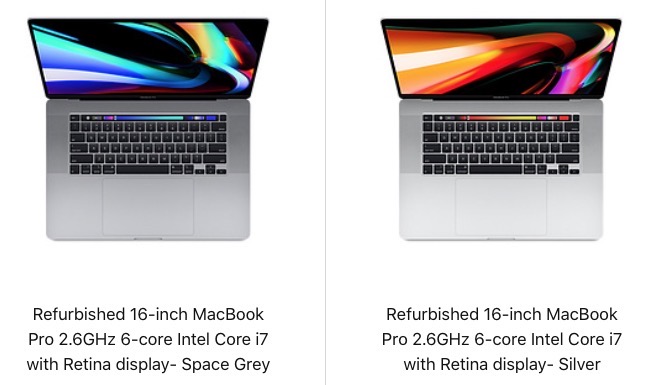
The MacBook Pro 13 measures 0.61 by 11.97 by 8.36 inches and weighs 3.1 pounds. Performance is an easy win for the MacBook Pro 16, but portability turns the tables. That is more than most people need, but if you do require that much, the MacBook Pro 16 is your go-to choice. What is more important is that the MacBook Pro 16 offers up to 64GB of memory. It is not quite as fast as the 3,733MHz RAM in the MacBook Pro 13, but RAM capacity makes more of a difference than RAM speed in most cases anyway. The MacBook Pro 16 has no such complications, as both of its models use 2,666MHz DDR4 memory. If you want the faster RAM - or up to 32GB of it - you need to buy one of the more expensive MacBook Pro 13 models that run 10th-generation Intel processors. The lower-priced MacBook Pro 13 models are stuck on 8th-generation Intel processors and are also limited to either 8GB or 16GB of slower 2,133MHz LPDDR3 memory. However, there is a notable caveat in that the speed and amount of RAM you get depends on your processor choice.

Here, the MacBook Pro 13 has improved compared to years past, offering up to 32GB of speedy 3,733MHz LPDDR4X memory. The final consideration when it comes to performance is RAM. Whether it’s for gaming, video editing, or 3D modeling, that discrete graphics card provides exponentially better performance. While the 10th-generation integrated graphics chips are much improved over previous-generation processors, they cannot compete with the AMD Radeon Pro graphics in the MacBook Pro 16.
APPLE REFURBISHED MACBOOK PRO 16 INCH PLUS
The MacBook Pro 13, meanwhile, does not have a dedicated graphics option at all, instead having to rely on the Iris Plus Graphics provided by its 8th- and 10th-generation Intel processors. The MacBook Pro 16-inch has many graphics options, from a 4GB AMD Radeon Pro 5300M to a spendy Radeon Pro 8GB 5500M with faster HBM2 memory. What about graphics? Apple has traditionally reserved dedicated graphics chips for its larger laptops, partly due to the limited space available in the MacBook Pro 13, and partly to promote the bigger models as being more premium. The MacBook Pro 13 does not have this overhauled thermal system, meaning you are likely to get much more performance out of the larger MacBook Pro. In our review, we said the difference was “astounding,” with the MacBook Pro 16 “ its predecessor in the dust in every benchmark and real-life test” we ran. Apple claims this incorporates a heat sink that is 35% larger than on the previous-generation MacBook Pro, resulting in 28% better airflow. The MacBook Pro 16 also benefits from Apple’s completely redesigned cooling system. You can get away with running Photoshop or Lightroom on the 13-inch, but if you’re editing 4K video, you’ll want the extra cores and threads of the larger MacBook Pro to speed up renders.

While we found the MacBook Pro 13-inch beat most fellow 13-inch competitors in our review, it is still way behind the MacBook Pro 16. Straightaway, that gives the MacBook Pro 16 a big advantage, especially if you’re planning to use it for content creation or heavy applications. More cores mean more power at your disposal, like a football team with an extra player on the field. Each core is like having an extra player on your team. You can even bump the 16-inch up to a Core i9 eight-core chip. The MacBook Pro 16, meanwhile, starts with a six-core, 16-thread processor. The 13-inch MacBook Pro comes with the option of either the base-level 8th-gen Intel model or the $1,799 10th-gen model. The core count is the first thing to consider. On paper, the larger laptop is leagues ahead here, but what does that mean in practice? Outside of price, performance is the single biggest difference between the MacBook Pro 16 and MacBook Pro 13. By the end, you should have a much clearer view of which MacBook Pro is best for you. In this guide, we will take you through the major differences between the two, explaining where each excels and struggles.


 0 kommentar(er)
0 kommentar(er)
